
There are few things that sum up the over the top nature of post-War American automobiles as much as the enormous station wagons that have wallowed along US roads since the 1950s. Cars of that sheer size just never existed in Europe – they wouldn’t fit. The Chrysler Town & Country looked long enough to straddle Belgium in one bound if it ever tried to cross the Pond – though this particular fifth generation example rarely left the north-eastern coast of the US.
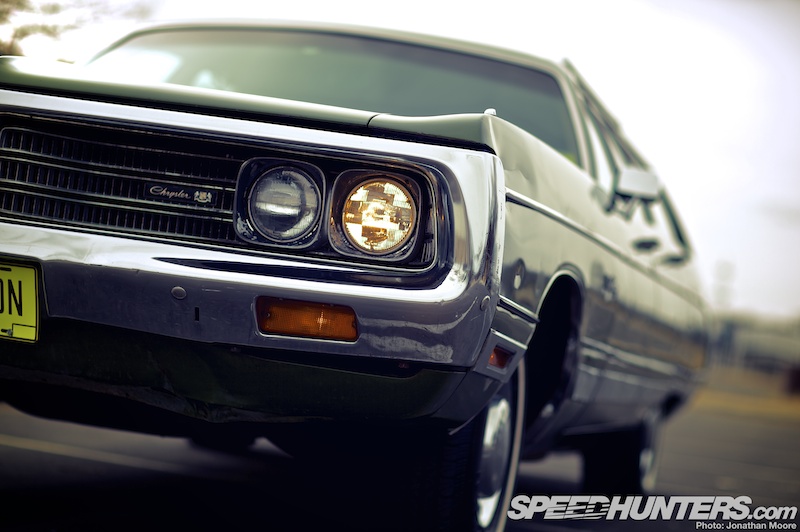
Originally built with the idea of ferrying large families to and from rail stations, these often wood-panelled monsters became a ubiquitous part of US automotive culture in the ’60s and reached their zenith in both size and luxurious features in the ’70s, before having to bow, like so many excessive large and petrol-guzzling cars, to the impact of the mid-’70s oil crises.
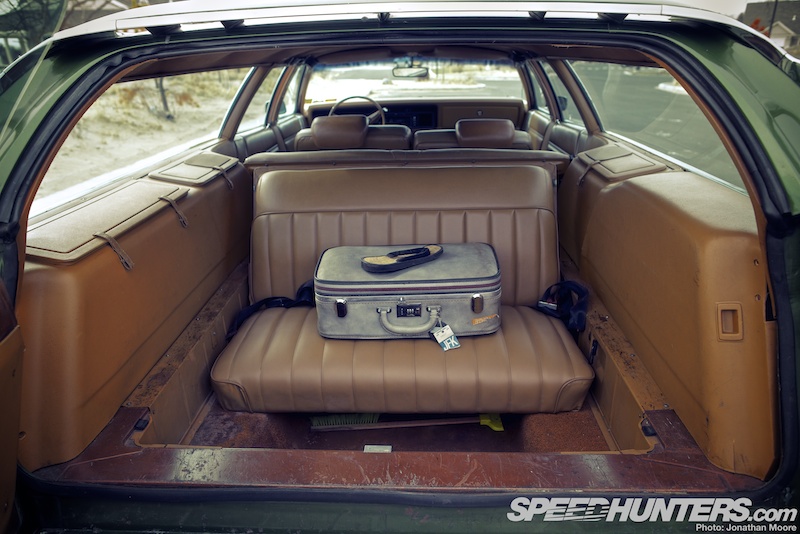
This ’72 Chrysler Town & Country is a little bit battered on the outside, signs of a less than sedate life on the streets of New York. The rust shows through in places. The tailgate sill shows that plenty of luggage has been hauled in and out.
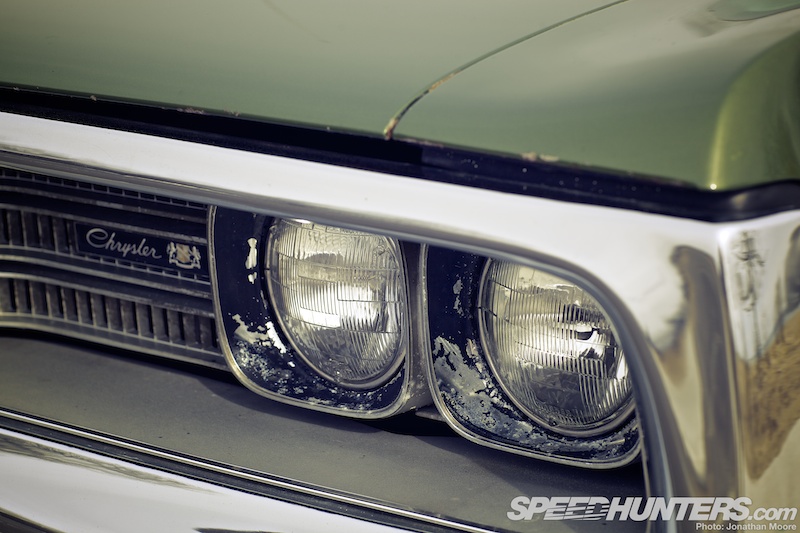
So, an old station wagon on Speedhunters? Why exactly are we showing you this car? Well, not just because it’s a nice twist for our American theme, but also because the owner of the car was someone rather special. It’s a real time capsule. Every dent and every scuff tell a story on this car that wasn’t driven between 1980 and 2012.
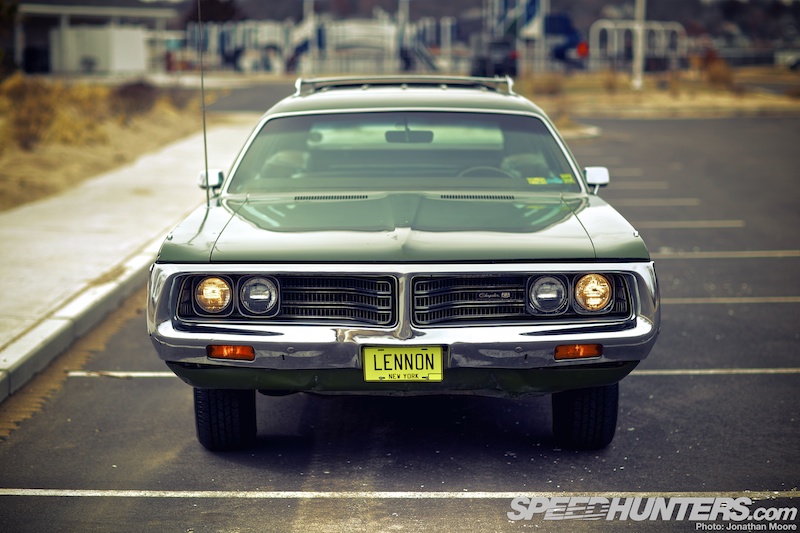
The licence plate gives it away.

This ’72 Town & Country was owned by ex-Beatle John Lennon and his wife Yoko Ono. Bought new by Apple Records, it had been picked out by Lennon and purchased through the London office. The choice of car was twofold: one, the size meant that it was perfect for slinging guitars and instruments in the back, and secondarily big cars like this were everywhere at the time – it actually stood out less than the psychedelic Rolls Royce or ostentatious Ferrari he had back in Europe. This, for Lennon, was a way to be inconspicuous in the hustle and bustle of NYC.

The colour was also hand-picked, possibly as it closely matched a particular herb that the plant-loving Lennon was fond of… Or perhaps it was because it was the colour of the Apple Records logo?
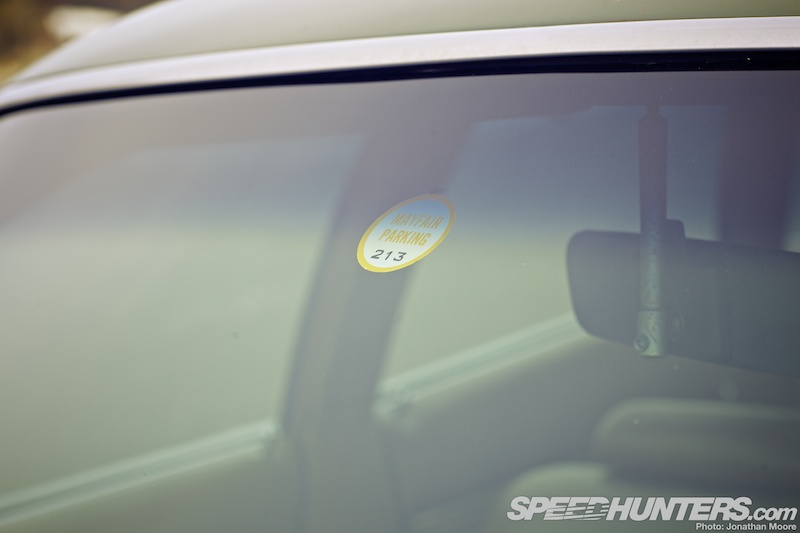
The car was shipped in to New York directly from the Chrysler factory on a specially chartered plane, and then kept at the Dakota building from ’72 until Lennon’s assassination in 1980. The parking permit is still affixed to the windscreen.
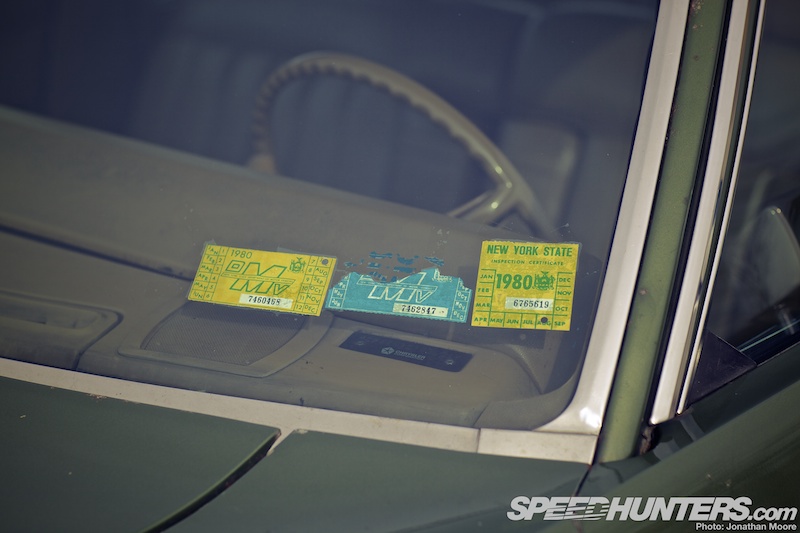
The car lived a short but intense active life in that time – hence all the signs of battle damage from a crowded ’70s New York. Lennon wasn’t renowned as a confident driver, so often his assistants would take the wheel on trips to studios in New York, to the Lennon-Ono house on Long Island, their farm in Pennsylvania or trans-continental trips to the West Coast.

The car wasn’t exactly well maintained; more patched up as and when required. The brakes were failing, the tyres were shot, and in ’78 a new Mercedes W123 300 Touring was bought as primary transport – the two cars were both used for the next two years.
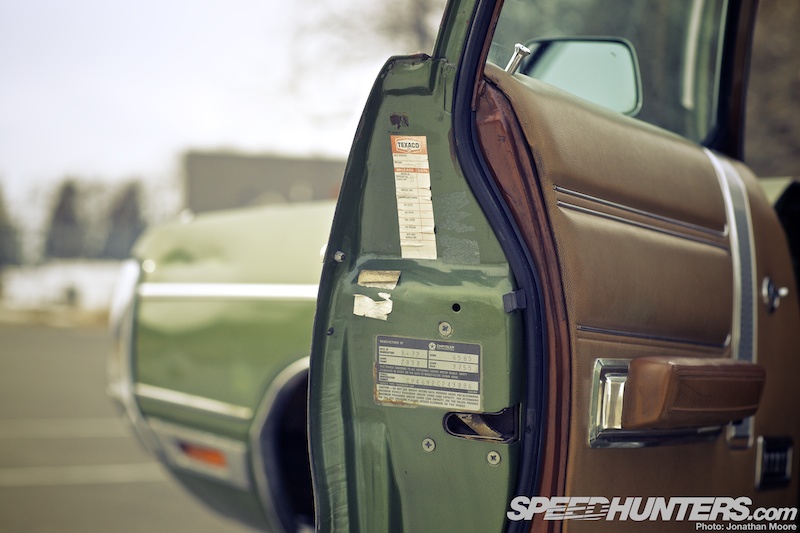
On Lennon’s death, the car was put into storage until being sold at auction in 1996 for $26,000. It was subsequently not driven but used by its new owner as part of a seance trip to channel Lennon’s spirit (and lyrics for a posthumous album!) through the spirits of the dead husbands of – would you believe it – rich New York widows. Surprisingly, tax issues eventually raised their head, and the owner was forced to again put the car up for auction.
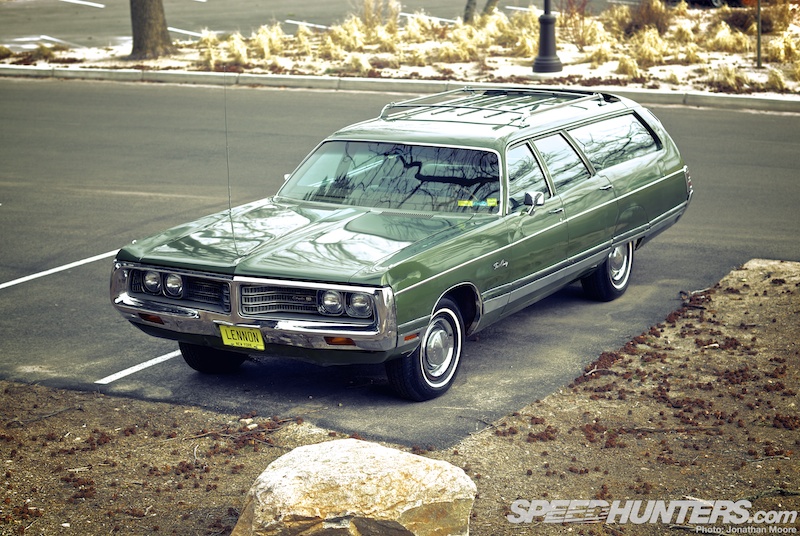
Phil Dolcetti, a friend of the Lennon-loving Gioiella family saw the car listed at a New York auction house on New Year’s Eve, 2011 – part of a big block of Lennon memorabilia coming under the hammer that included Lennon’s white Abbey Road suit and Imagine video jacket. Son David called his father Hank, suggesting he should go down and bid on it, and on a snowy New Year’s Day, to his surprise the hammer came down on Hank’s bid of just $5,500. Pretty good when you think that Lennon’s ’65 Mercedes 230SL is going up for auction at $495,000.
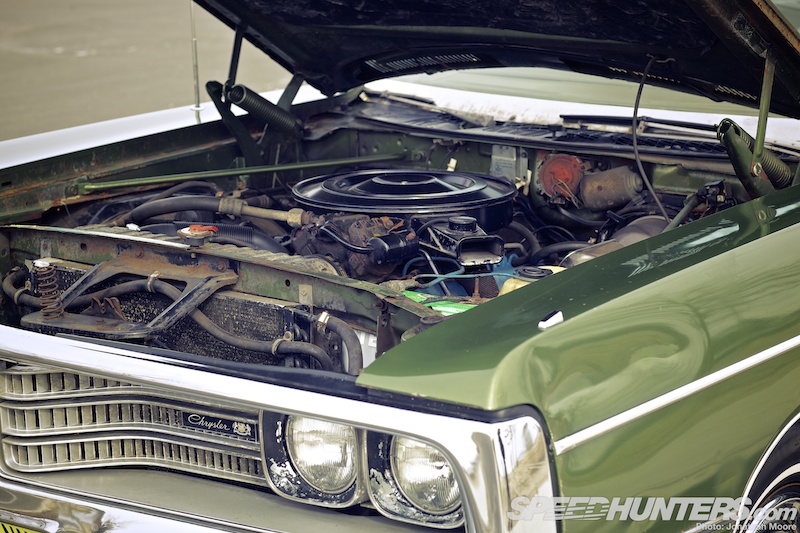
The Gioiellas carried out a sensitive refurbishment to make it road-worthy – the gas tank needed cleaning out, the carburetor rebuilt, the brakes had to be replaced, the power steering hydraulics needed flushing and so on – but they kept all the old parts that had to be stripped out so it could be restored to completely authentic (though non-running) spec if required.
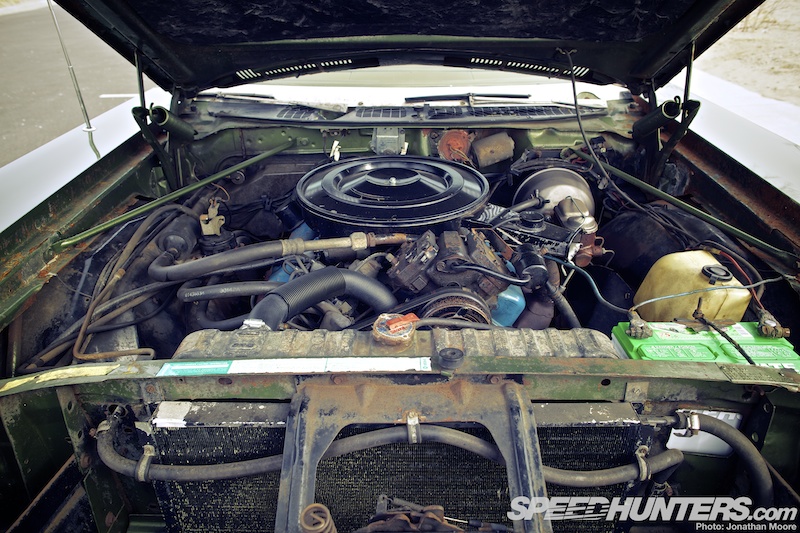
This T&C has the bulletproof 6.6-litre 400CI V8 engine, which burbles away under the hood and is all original, though naturally fluids and ancillaries all needed changing. New-old stock parts were used where rebuilding wasn’t possible – the project was about safeguarding a piece of both automotive and music history.
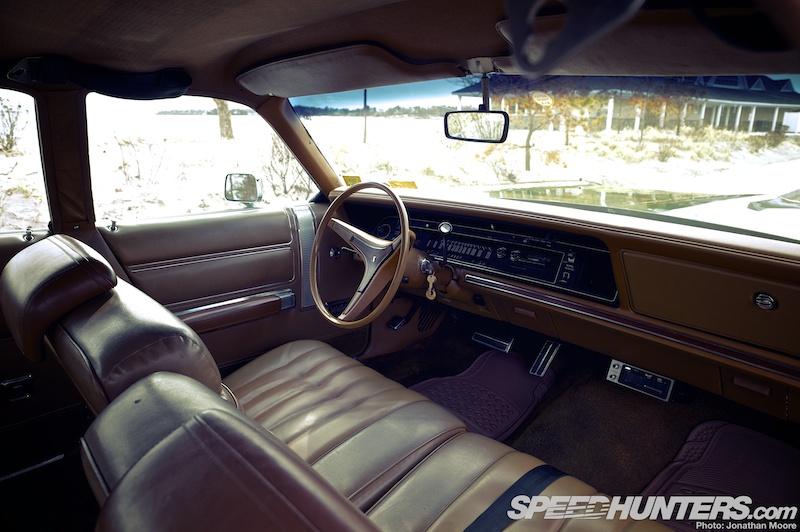
What they ended up with wasn’t just a car with a famous owner: the Chrysler had literally been stored in the condition it had been left by Lennon and his assistants, complete with a glovebox full of cassettes and papers, cigarette butts (and more besides…) in the ashtrays and various detritus in and around the interior – even stuffed down into the cracks between seats.

An eight-track cassette player had been added in…
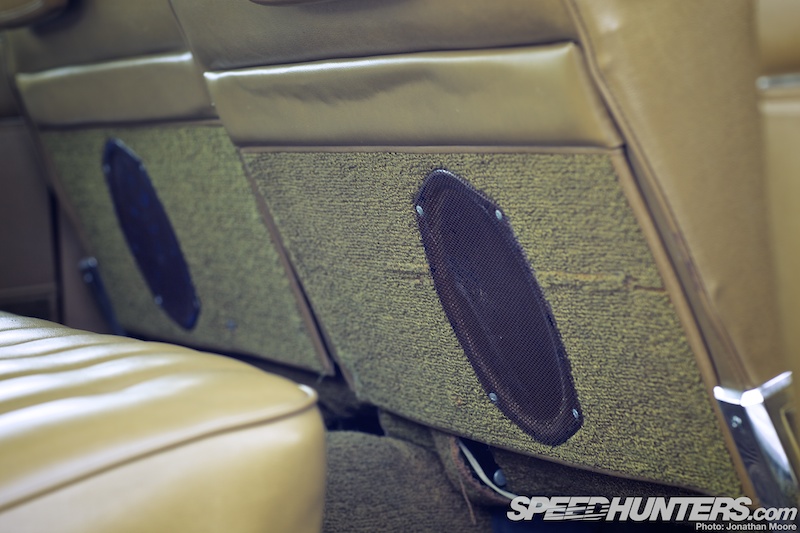
…along with extra speakers in the back of the front bench seat, so the Lennons could kick back and relax whilst they were ferried to their destination.

This was the mobile Lennon living room: contemporary photos show John Lennon spread out across the middle seat.
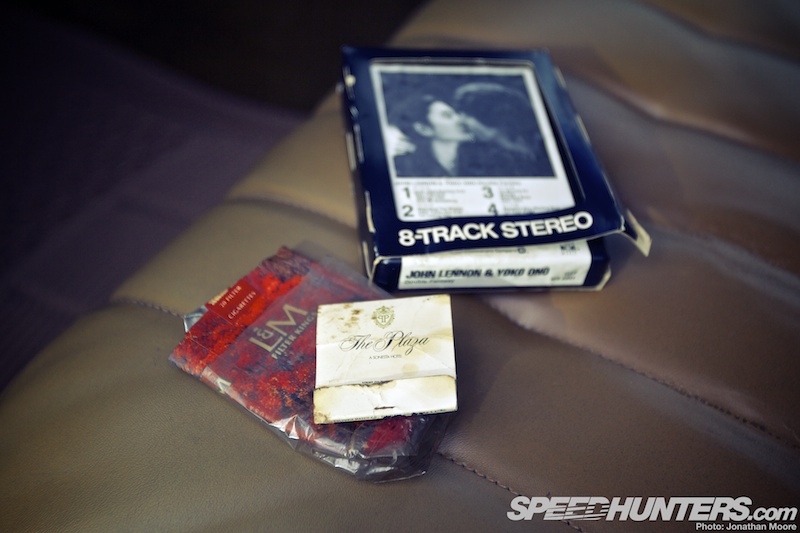
Squashed cigarette packs and matches were also uncovered. Subsequently, the Gioiellas also discovered a hand-written to-do list in the memoirs of one of Lennon’s PAs, which amongst things like buying marmalade had a note about filling both the Merc and Chrysler with full tanks of gas.
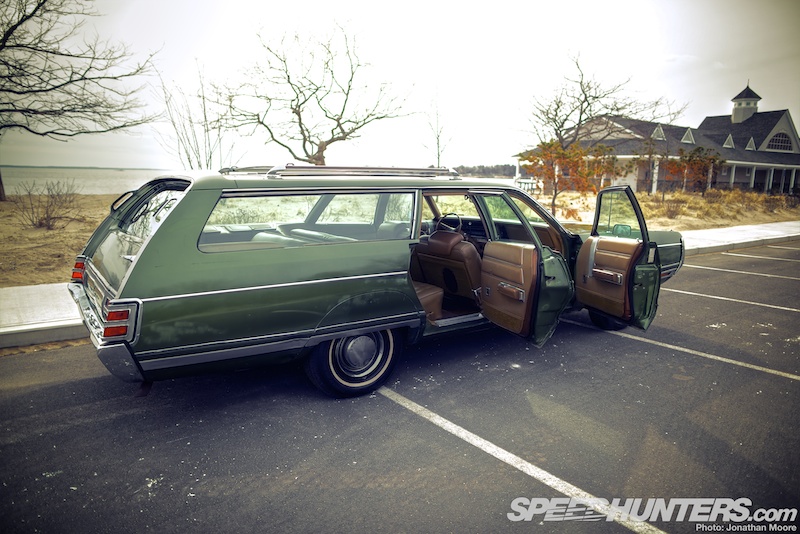
The Town & Country model had evolved over the years since its introduction in 1941 as a steel-roofed ‘woodie wagon’, wood panels being affixed to the side panels of the hugely long car (not fitted by request on this ’72). The long and specially reinforced wheelbase stretched even more over the generations, as did the price.
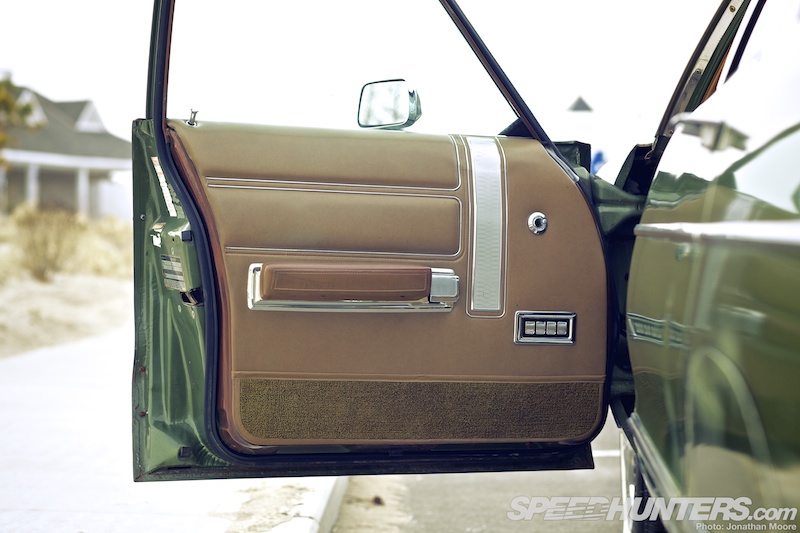
Even by the ’60s it was the most luxurious and most expensive wagon on the market, featuring such mod cons as plush trim, air conditioning, electric windows and a third row of seats.
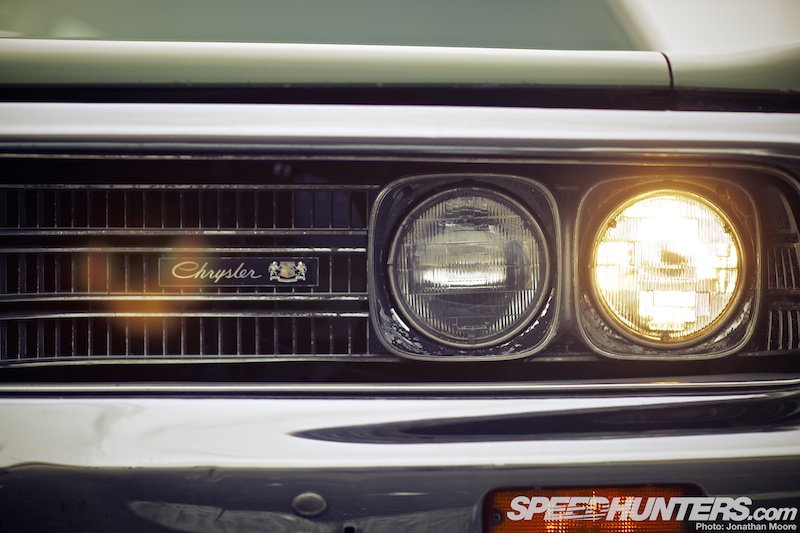
Squared-off, dual headlights lit up the road ahead, and fender-mounted turn signals were added. That price was an obstacle though: less than 10,000 of this model were sold.
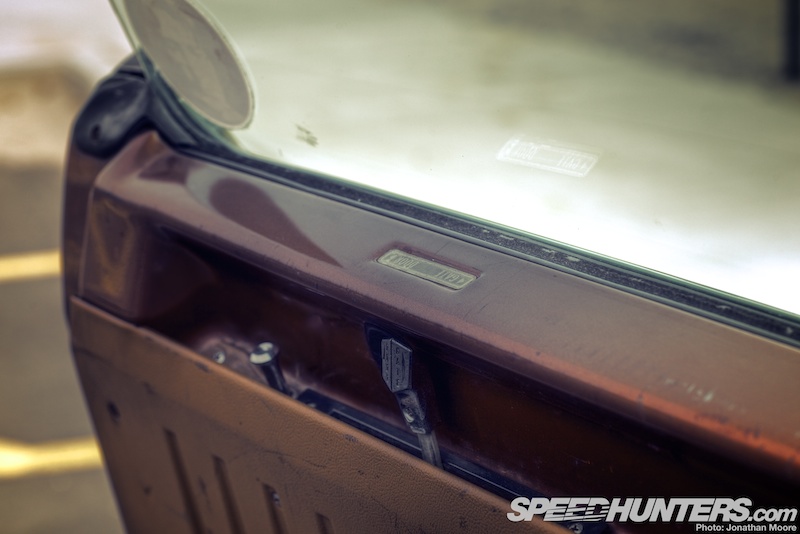
To say that storage was ample would be an understatement. The voluminous rear compartment had fold-flat seats and extra pockets moulded into the interior panelling. The tailgate itself had become dual-role: it could either hinge up or open out like a door depending on the position of the switch. This was true Modern Living.
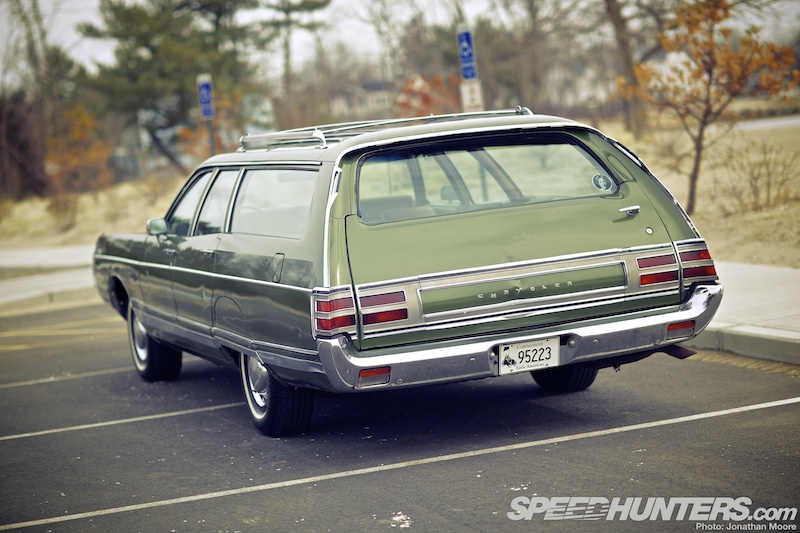
The air deflector that arcs over the top of the tailgate wasn’t for aerodynamic reasons – rather it was to prevent a vacuum forming behind the insanely long hole the car had punched through the air, which otherwise would suck up exhaust fumes and dust into the area behind the rear window.
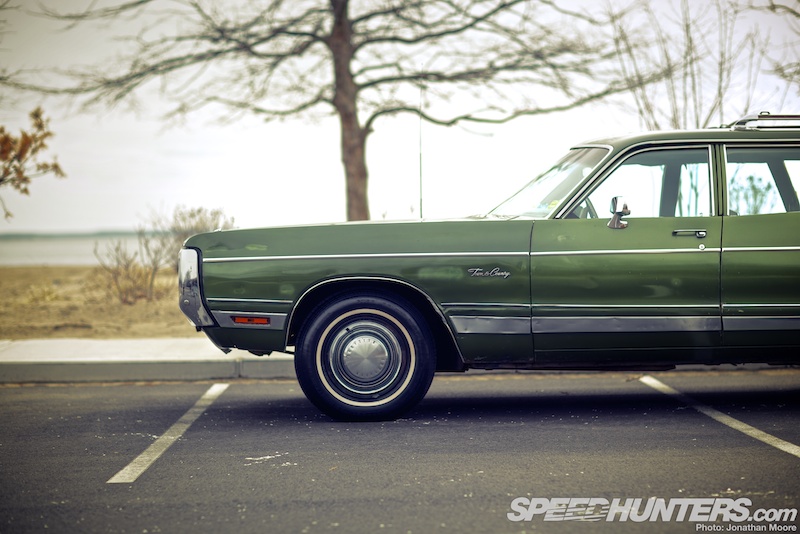
The track and wheelbase always seem undersized on these kind of cars compared to the body. The T&C is over five and a half metres long, with a three-metre wheelbase. When I was doing the inches to metres conversion, I had to keep double checking, as it just seemed too big to believe!

But then I remembered having to get a cab to get from one end of the car to the other…
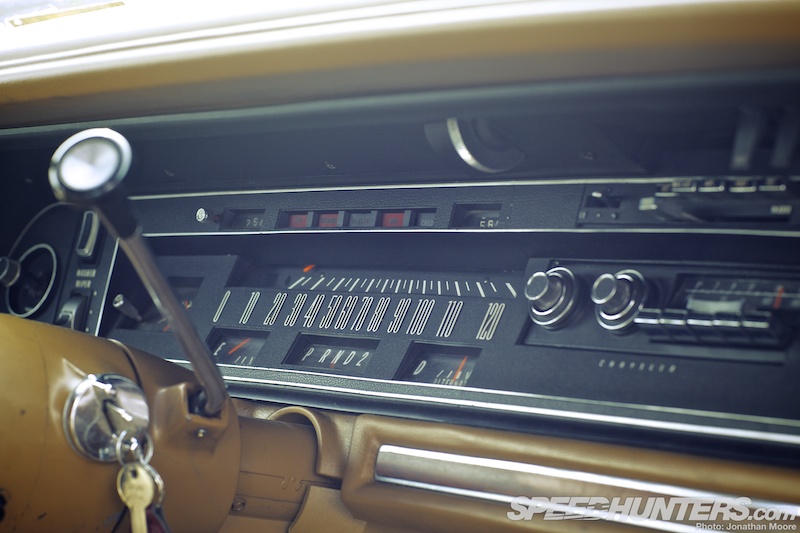
Watching it drive along from my following car on the way to shoot at Long Island Sound, the T&C seemed to drive like a wallowing hovercraft draped over a chassis half the size. Like a hippo on a skateboard.
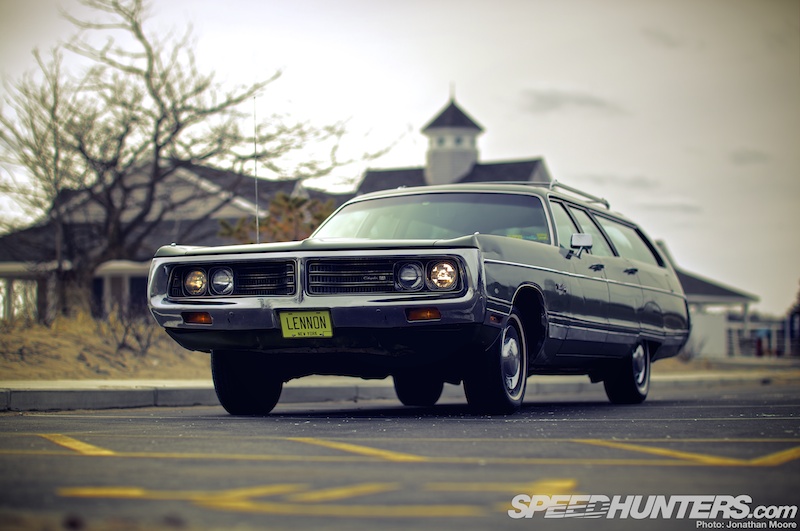
With acceleration from the big V8 the nose lazily pointed skywards; in corners it looked like it might tip over; under braking it was like trying to stop a ferry. But what does that mean on the inside?
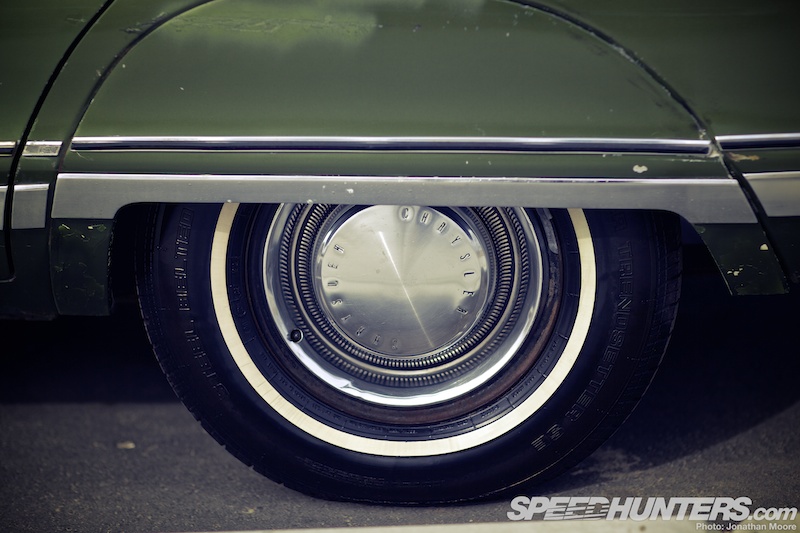
Well, predictably an insanely comfortable ride, thanks to Chrysler’s Torsion-Quiet Ride system: ‘the quietest, smoothest riding wagon in the industry’.
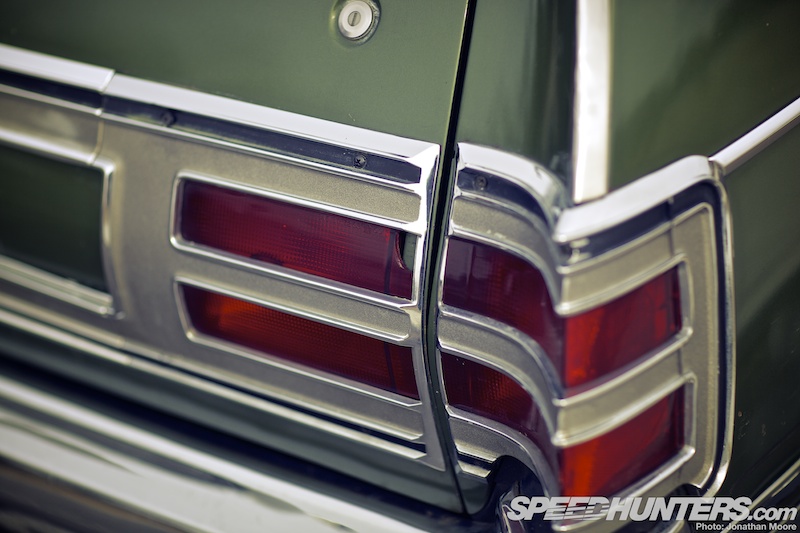
The Chrysler was from a period when Lennon was trying to live a simpler life, relatively speaking. He owned the T&C longer than any other car, which definitely says something.
Hank: “He wants people to know you don’t need nice things. The message from John Lennon is that you don’t need a lot to live. This is what he was happy with.”
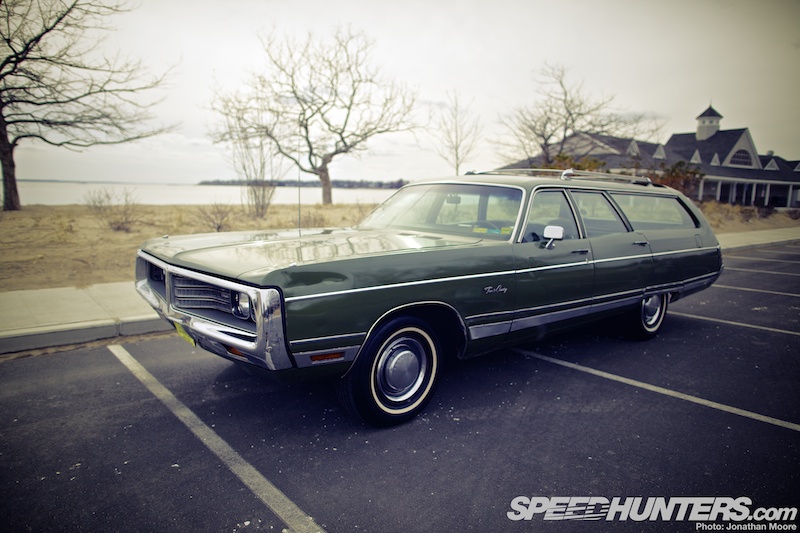
A couple of hours earlier, as I had pulled up to the turn-off for the Gioiella residence, my iPod continued its random play with well over 2,000 tracks to choose from. And what came on as I turned off the Interstate? John Lennon’s masterpiece, Imagine. This isn’t unusual according to David and Hank.
David: “Often Lennon songs come on the radio by complete coincidence. When my dad called me to say that the car was back in the garage for the first time, Watching The Wheels Go Round came on the stereo; a mechanic had a Lennon song come on the radio the first time he took it for a test drive; and then there’s you with Imagine… It could be coincidence, but it’s kinda interesting.”
It seems Lennon’s spirit still lives on – maybe the previous owner was onto something after all…
Jonathan Moore
American theme on Speedhunters 2013















More popular than Chrysler!
Speed_Kiwi It does make me wonder, if he was trying to simplify and blend in with traffic, why he didn't choose a mechanically-identical but much cheaper Plymouth Fury wagon bought off the lot.
Those plates are not only more recent but entirely fake, NY plates from the '70s were yellow-orange, not lemon yellow like these.
Great article. Just one point. The T&C Chrysler is actually the second longest-owned car owned by Lennon. His first 1965 Rolls-Royce Phantom V (5VD73 - FJB 111C) remained in his possession from 1965 - 1977. His second 1965 Phantom V (5VD63 - EUC 100C) was purchased second-hand in 1966 and sold to Allen Klein in 1969. Lennon's third 1964 Phantom V was bought second-hand in New York by Yoko Ono in 1980 as a fortieth birthday present for her husband. This American Phantom V is currently one of the jewels in the Tebo Auto Collection in Colorado. The only problem is that it is being deliberately misrepresented as 5VD63. However, a forensic analysis would reveal that the chassis number is 5LVD15, the car the Yoko bought for John in 1980. It's LHD for goodness sake! For more information about John Lennon's three
Phantoms: http://www.60x50.com/search/label/John%20Lennon
Correction: I meant to say - "Lennon's third 1964 Phantom V was bought second-hand in New York by Yoko Ono in 1980 as an 11th anniversary present for her husband", i.e. in March 1980.
WOW! My first car was the family wagon (of course) which was a '72 Fury Sport Suburban Brougham, same car different trim. The back door was totally cool. The 27 gallon gas tank, not so cool.
Together with Sam Fiorani, I wrote about this car and photographed it on the eve of its 2011 auction.
Here's a link to the story.
http://www.automotivetraveler.com/magazine/viewer.php?path=2010/12/John_and_Yoko_1972_Chrysler_Wagon
Well I basically grew up in a similar car. My parents had a 1971 Ford Country Squirer stationwagon. It was about the same dimensions. Had a 8 cylinder, 4 barrel 390C.I. (cubic inches) not a 400. That baby hauled. And my father needed it with 6 children in our family plus a grandmother (who lived with most of the 70's .) I was number 5 in the pecking order and so me and my little sister always had to sit in the very back of the car being the smallest. When I got old enough to drive in 1978 I did some of my student driving with that car. Sure I floored it a couple times just to get a feel for the power it had. When there was only one person in the car it did make a difference versus having a few people. There was more power going to transmission when you accelerated and therefor was a quick car empty. When you had more people you need some extra time for braking to a stop. These are the kinds of things most drivers take for granted today. It was almost like driving a long sleek truck.